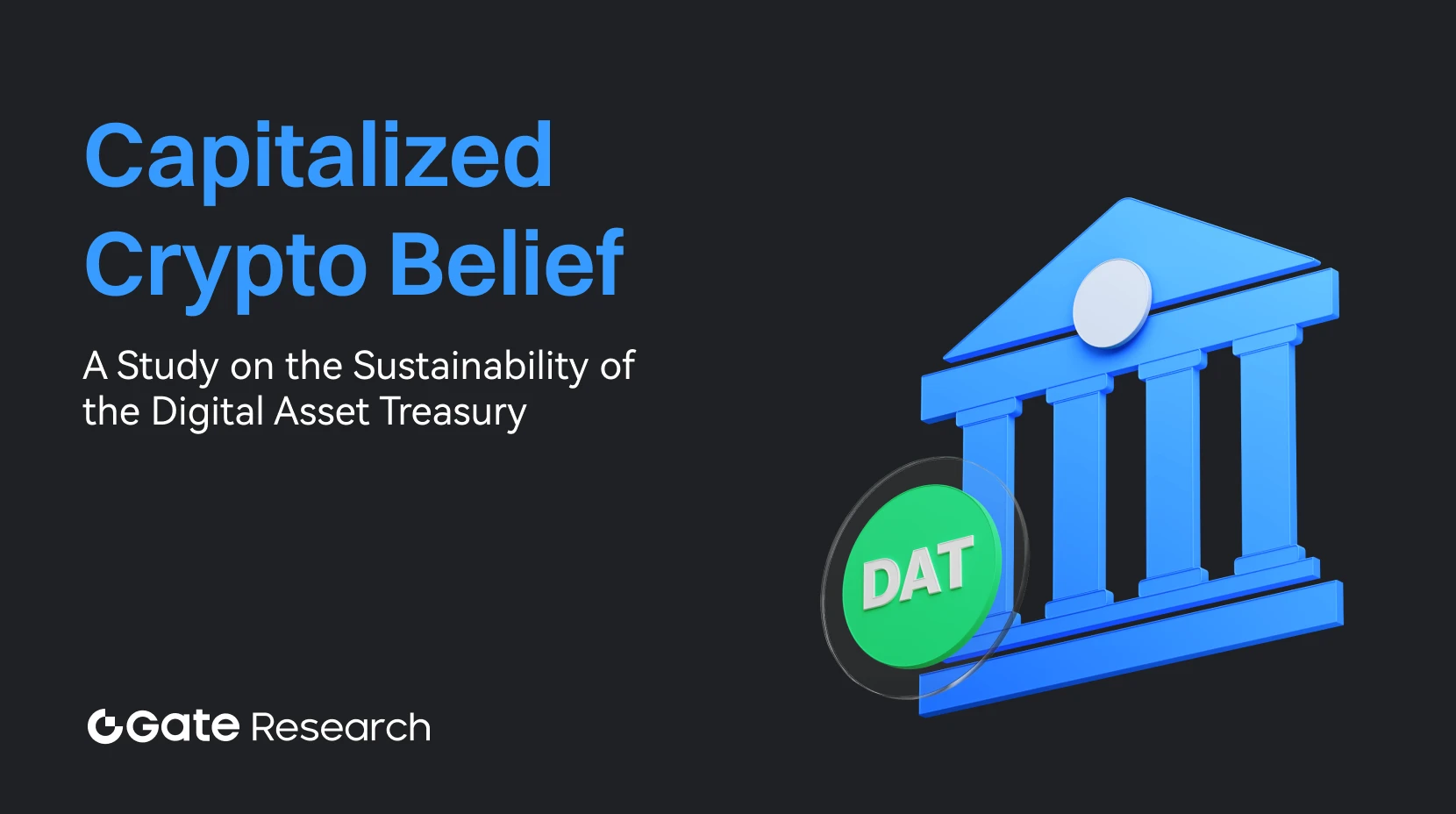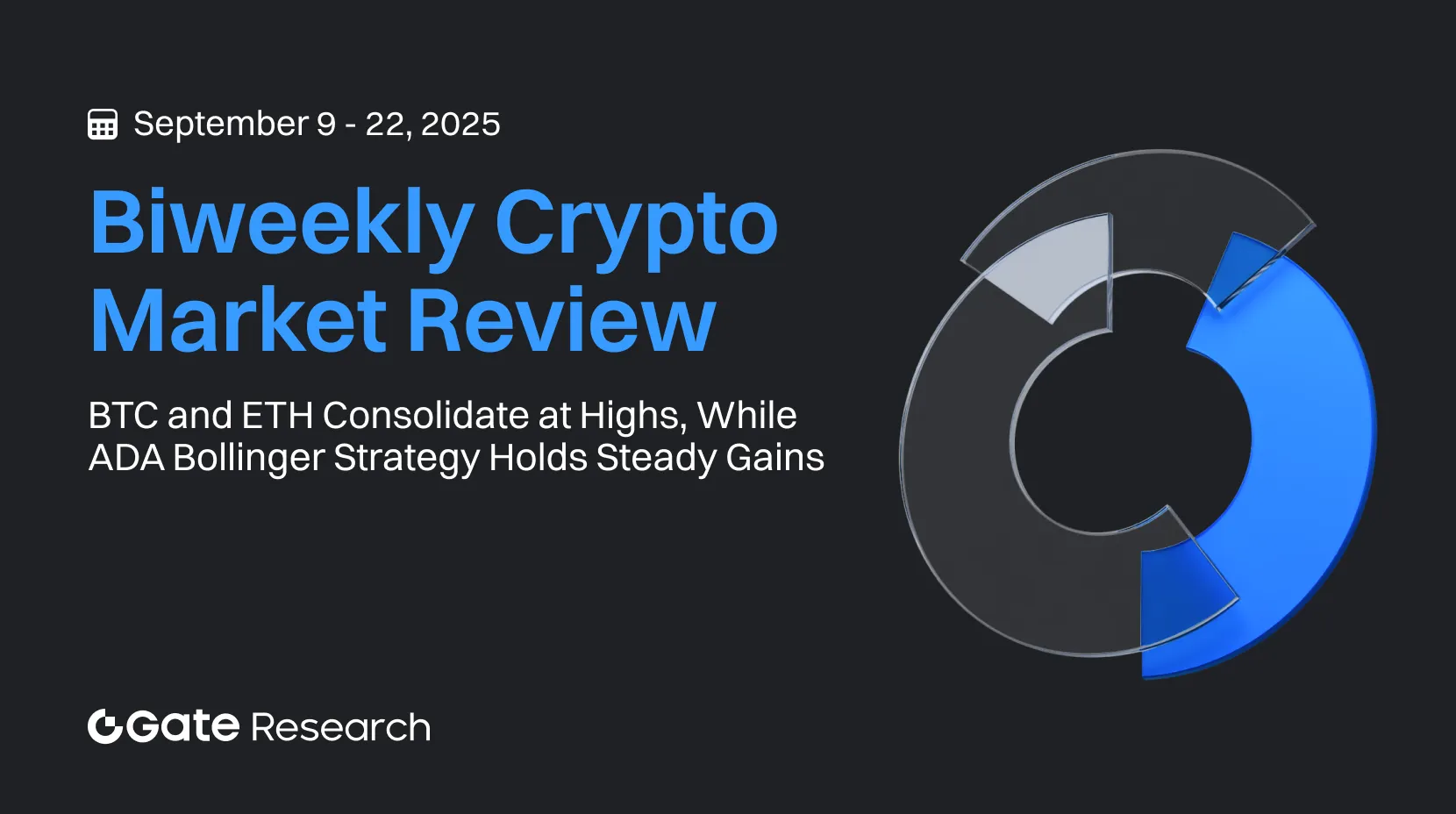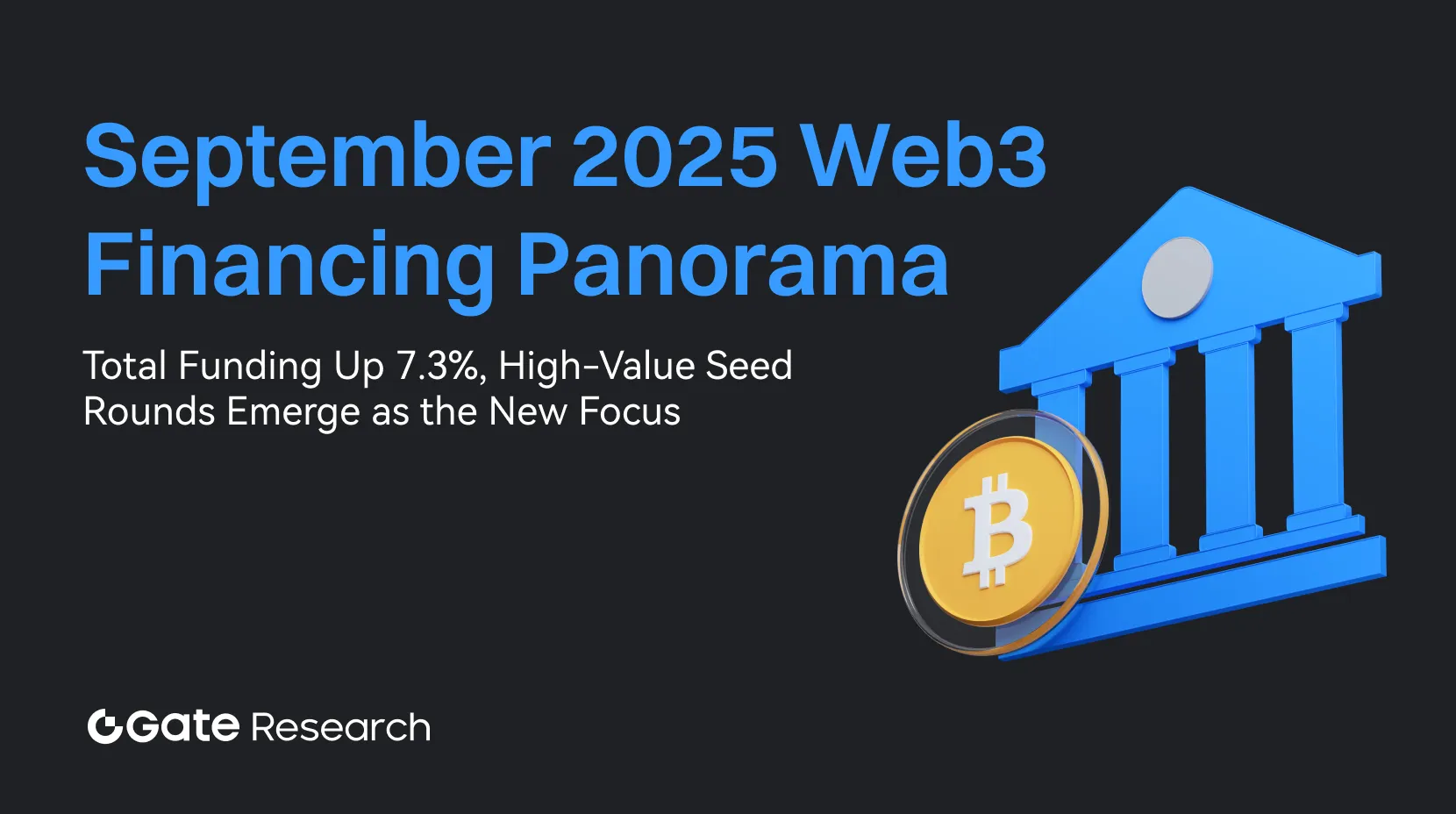Gateway to Learning
Want to invest in crypto but don't know where to start?
Learn crypto through the simplest words.
 Must Read Daily Market Reports
Must Read Daily Market Reports
Must Read Daily Market Reports
 Gate Research: Capitalized Crypto Belief, A Study on the Sustainability of the Digital Asset Treasury
Gate Research: Capitalized Crypto Belief, A Study on the Sustainability of the Digital Asset Treasury
Gate Research: Capitalized Crypto Belief, A Study on the Sustainability of the Digital Asset Treasury
 Gate Research: BTC and ETH Consolidate at Highs, While ADA Bollinger Strategy Holds Steady Gains
Gate Research: BTC and ETH Consolidate at Highs, While ADA Bollinger Strategy Holds Steady Gains
Gate Research: BTC and ETH Consolidate at Highs, While ADA Bollinger Strategy Holds Steady Gains
 Gate Research: $441 Million in Liquidations Across the Market in the Past 24 Hours | Polymarket On-Chain Activity Surges
Gate Research: $441 Million in Liquidations Across the Market in the Past 24 Hours | Polymarket On-Chain Activity Surges
Gate Research: $441 Million in Liquidations Across the Market in the Past 24 Hours | Polymarket On-Chain Activity Surges
 Gate Research: Total Funding Up 7.3%, High-Value Seed Rounds Emerge as the New Focus|September 2025 Web3 Fundraising Overview
Gate Research: Total Funding Up 7.3%, High-Value Seed Rounds Emerge as the New Focus|September 2025 Web3 Fundraising Overview
Gate Research: Total Funding Up 7.3%, High-Value Seed Rounds Emerge as the New Focus|September 2025 Web3 Fundraising Overview
Featured Courses
More
Intermediate
Technical analysis: A useful tool to understand trends in Futures trading
Understand candlestick patterns and recognize market trends. Build a technical analysis system to make informed trading decisions

Advanced
Tools That Help You Trade Better: Moving Averages, Trend Lines, and Indicators
There are no trading rules that are applicable to any scenario. These courses will help you establish your own trading strategy, then test it and improve on it in practice

Intermediate
L1 Deep Dives: Hyperliquid (HYPE)
This course provides a detailed exploration of Hyperliquid, a high-performance decentralized exchange (DEX) built on its proprietary Layer 1 blockchain. Designed for advanced users, developers, and blockchain enthusiasts, the course delves into Hyperliquid's technical architecture, tokenomics, strategic partnerships, governance mechanisms, and its role in the evolving DeFi landscape.
Learn by Topic
Topics
Altcoins
Bitcoin
Blockchain
DeFi
Ethereum
Metaverse
NFTs
Trading
Tutorial
Futures
Trading Bots
BRC-20
GameFi
DAO
Macro Trends
Wallets
Inscription
Technology
Meme
AI
SocialFi
DePin
StableCoin
Liquid Staking
Finance
RWA
Modular Blockchains
Zero-Knowledge Proof
Restaking
Crypto Tools
Airdrop
Gate Products
Security
Project Analysis
CryptoPulse
Research
TON Ecosystem
Layer 2
Solana
Payments
Mining
Hot Topics
P2P
Sui Ecosystem
Chain Abstraction
Options
Quick Reads
Video
Daily Report
Market Forecast
Trading Bots
VIP Weekly Industry Report
ETF Leveraged Tokens
Top Stories
XRP
Pi Network
VIP Daily Industry Report
In-Depth Research
Gate Ventures
Weekly Report
Investment News
Difficulty
Beginner
Intermediate
Advanced
Latest Courses
More
Beginner
Web3 & Metaverse
In this course, we’ll demystify two of the buzziest concepts in crypto and tech: Web3 and the Metaverse. By now, you’ve learned about blockchain technology, cryptocurrencies like Bitcoin and Ethereum, and the power of decentralization in Courses 1–3. Now we’ll build on that foundation to explore how those ideas are transforming the internet and virtual worlds. What do Web3 and metaverse actually mean, and why do they matter? By the end of this course, you’ll have a clear, beginner-friendly understanding of these concepts and how you can start exploring them.

Intermediate
Technical analysis: A useful tool to understand trends in Futures trading
Understand candlestick patterns and recognize market trends. Build a technical analysis system to make informed trading decisions

Beginner
Decentralization
Welcome to Decentralization, the third step in your crypto learning journey. In this course, you’ll learn why decentralization is one of the most important ideas in crypto the very reason Bitcoin was born and how it shapes everything from money to organizations.
Latest Articles
More
Advanced
Gate Research: Capitalized Crypto Belief, A Study on the Sustainability of the Digital Asset Treasury
Strategy pioneered the DAT model, and by 2025, Ethereum DATs have sparked a new wave of staking activity. The core logic of the DAT model is a “finance–buy–refinance” cycle, forming a self-reinforcing flywheel. The attractiveness and risk profile of a DAT in capital markets are jointly determined by per-share token holdings, underlying asset prices, and mNAV. The Ethereum DAT model has evolved from merely being a token holder to becoming a network participant and yield generator. Based on the DAT Sustainability Five-Force Model, the conclusion is that only DATs with robust capital structures, transparent financial disclosure, and clear strategic positioning can truly survive market cycles.
10/17/2025, 9:17:07 AM

Advanced
Gate Research: Ethereum Remains Top Choice for Developers|Tokenized Gold Hits All-Time High Market Cap
Gate Research Daily Report: On October 17, the crypto market came under pressure, with major assets broadly declining. BTC fell 1.87%, while ETH dropped 1.70%, both maintaining weak, range-bound structures. A few thematic tokens, however, bucked the trend — XPIN surged 133.33% driven by multi-chain collaboration and mainnet expectations; ZKC rose 56.23% on mainnet progress and real-time proof updates; and KGEN gained 43.22% following its token launch and ecosystem partnership news. Meanwhile, Ethereum remained the top ecosystem by developer count, Tokenized Gold hit a new market cap high, and Chainlink launched its real-time oracle integration, marking further innovation in DeFi infrastructure.
10/17/2025, 6:12:35 AM

Beginner
Gate Releases September Transparency Report: Global Users Surpass 41 Million as "All in Web3" Strategy Accelerates Ecosystem Expansion
Gate, a global leading digital asset trading platform, has released its September 2025 Transparency Report, revealing remarkable growth across its core trading business, ecosystem development, brand influence, and user base. The report highlights Gate’s accelerated execution of its "All in Web3" strategy, signaling another milestone in its evolution toward a fully integrated Web3 ecosystem.
10/17/2025, 6:02:32 AM
Latest Research
More
Advanced
Gate Research: Capitalized Crypto Belief, A Study on the Sustainability of the Digital Asset Treasury
Strategy pioneered the DAT model, and by 2025, Ethereum DATs have sparked a new wave of staking activity. The core logic of the DAT model is a “finance–buy–refinance” cycle, forming a self-reinforcing flywheel. The attractiveness and risk profile of a DAT in capital markets are jointly determined by per-share token holdings, underlying asset prices, and mNAV. The Ethereum DAT model has evolved from merely being a token holder to becoming a network participant and yield generator. Based on the DAT Sustainability Five-Force Model, the conclusion is that only DATs with robust capital structures, transparent financial disclosure, and clear strategic positioning can truly survive market cycles.
10/17/2025, 9:17:07 AM

Advanced
Gate Research: Ethereum Remains Top Choice for Developers|Tokenized Gold Hits All-Time High Market Cap
Gate Research Daily Report: On October 17, the crypto market came under pressure, with major assets broadly declining. BTC fell 1.87%, while ETH dropped 1.70%, both maintaining weak, range-bound structures. A few thematic tokens, however, bucked the trend — XPIN surged 133.33% driven by multi-chain collaboration and mainnet expectations; ZKC rose 56.23% on mainnet progress and real-time proof updates; and KGEN gained 43.22% following its token launch and ecosystem partnership news. Meanwhile, Ethereum remained the top ecosystem by developer count, Tokenized Gold hit a new market cap high, and Chainlink launched its real-time oracle integration, marking further innovation in DeFi infrastructure.
10/17/2025, 6:12:35 AM

Advanced
 Gate Research: Crypto Market Correction Deepens|Tokenized Gold Market Cap Hits Record High
Gate Research: Crypto Market Correction Deepens|Tokenized Gold Market Cap Hits Record High
On October 17, the crypto market came under pressure, with major assets broadly declining. BTC fell 1.87%, while ETH dropped 1.70%, both maintaining weak, range-bound structures. A few thematic tokens, however, bucked the trend — XPIN surged 133.33% driven by multi-chain collaboration and mainnet expectations; ZKC rose 56.23% on mainnet progress and real-time proof updates; and KGEN gained 43.22% following its token launch and ecosystem partnership news. Meanwhile, Ethereum remained the top ecosystem by developer count, Tokenized Gold hit a new market cap high, and Chainlink launched its real-time oracle integration, marking further innovation in DeFi infrastructure.
10/17/2025, 5:55:03 AM
Glossary
Moreapr
Annual Percentage Rate (APR) is a financial metric expressing the percentage of interest earned or charged over a one-year period without accounting for compounding effects. In cryptocurrency, APR measures the annualized yield or cost of lending platforms, staking services, and liquidity pools, serving as a standardized indicator for investors to compare earnings potential across different DeFi protocols.
fomo
Fear of Missing Out (FOMO) is a psychological state where investors fear missing significant investment opportunities, leading to hasty investment decisions without adequate research. This phenomenon is particularly prevalent in cryptocurrency markets, triggered by social media hype, rapid price increases, and other factors that cause investors to act on emotions rather than rational analysis, often resulting in irrational valuations and market bubbles.
nft
NFT (Non-Fungible Token) is a unique digital asset based on blockchain technology where each token possesses a distinct identifier and non-interchangeable characteristics, fundamentally different from fungible tokens like Bitcoin. Created through smart contracts and recorded on the blockchain, NFTs ensure verifiable ownership, authenticity, and scarcity, primarily applied in digital art, collectibles, gaming assets, and digital identity.
leverage
Leverage refers to a financial strategy where traders use borrowed funds to increase the size of their trading positions, allowing investors to control market exposure larger than their actual capital. In cryptocurrency trading, leverage can be implemented through various forms such as margin trading, perpetual contracts, or leveraged tokens, offering amplification ratios ranging from 1.5x to 125x, accompanied by liquidation risks and potential magnified losses.


Your Gateway to Crypto World, Subscribe to Gate for A New Perspective
